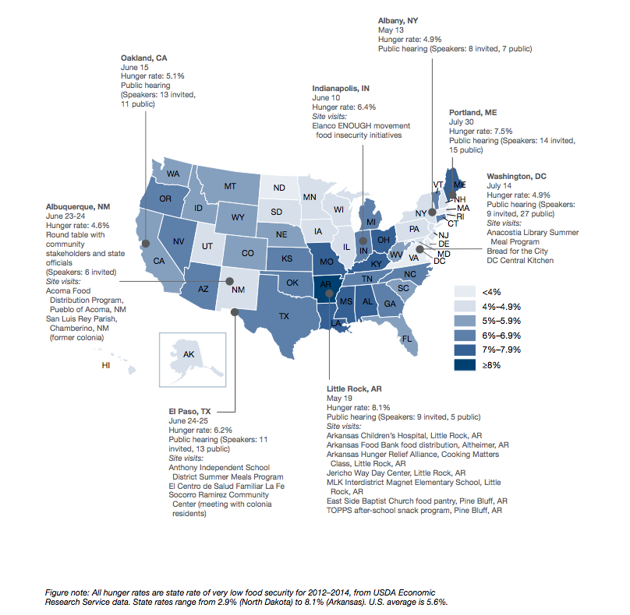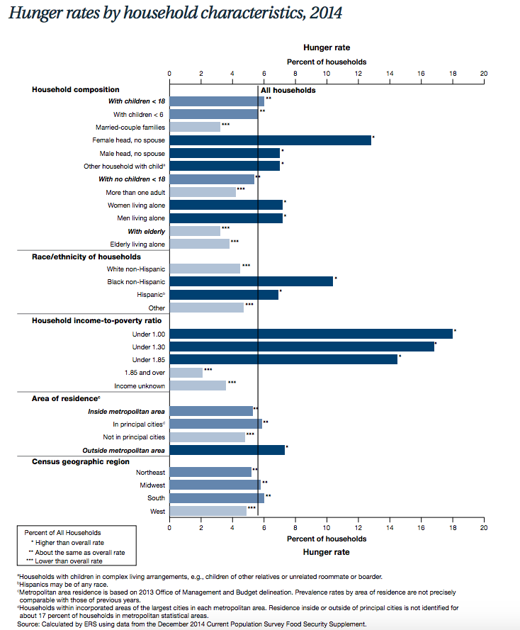EMILY DERUY JAN 6, 2016
https://www.theatlantic.com/
5 Things You Didn’t Know About Hunger in USA
Hunger is not colorblind.

1. More Americans Are Hungry
In 2010, after the recession, hunger rose to 5.4 percent, and has hovered around the current 5.6 percent for years. In 2007, by contrast, just 4.1 percent of American households experienced hunger, according to a new report from the Commission. Some states, including North Dakota, have relatively low rates of hunger, while others, such as Arkansas, have rates above 8 percent. In all, nearly 7 million Americans experience hunger every year.

When a child is hungry, her schooling can be impacted. Hungry teens are more likely than their regularly-fed peers to contemplate suicide and have other mental-health problems. A hungry adult is more susceptible to certain health problems brought on by a lack of nutrition, which can hurt his or her ability to work. Hungry seniors are more susceptible to depression. The report suggests that if hunger were eliminated, the nation would be able to curb costs in the health care and education systems.

The report suggests that 90 percent of people who are released from prison experience household food insecurity. More than a third say they’ve skipped eating for an entire day because they couldn’t afford any food. Hunger doesn’t just impact a former prisoner, though; it affects his family, even while he is behind bars. Having a partner or parent in prison can throw family life into disarray and eliminate income that was previously used to purchase food. The issue can be compounded by emotional stress and trauma at losing, at least temporarily, a loved one.
5. Women May Suffer Hunger Due to Abuse
Since hunger is not an isolated issue, there are multiple ways to attack it. For example, women who have suffered domestic violence are more likely to be hungry, so reducing domestic-violence rates could help curb hunger. The commission points out the benefits of federal food assistance, particularly for women and children, but suggests that such programs should also incorporate job training and placement to help participants earn enough not to need the assistance.

No hay comentarios:
Publicar un comentario